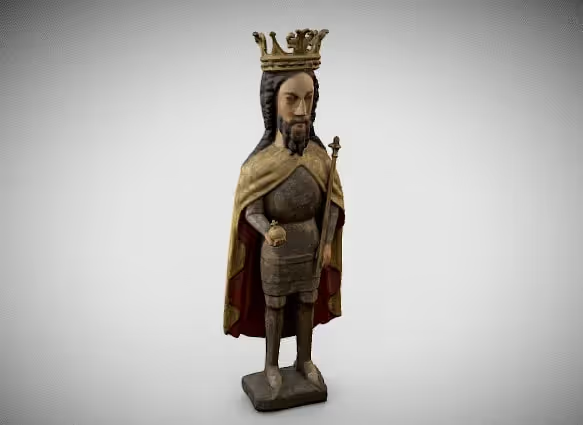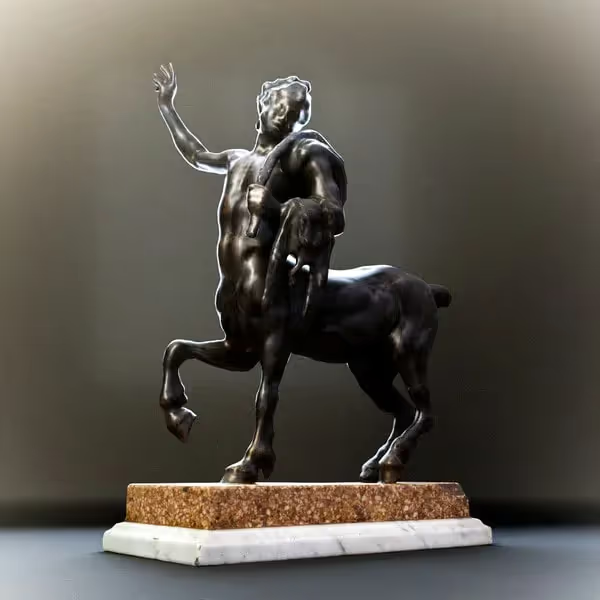
Museums and heritage organizations face a range of ethical and logistical problems in preserving and sharing cultural heritage. These include questions around ownership and access, representation and cultural sensitivity, conservation and preservation, privacy and security, among others. Digitization using 3D computer graphics and online render farms presents an innovative solution to these challenges, offering a way to preserve cultural heritage and make it accessible to a wider audience.
This technology is already being used to create detailed and accurate representations of historical treasures and heritage sites, from sculptures and relics to entire cities. And when it comes to rendering these representations, online render farm services are an invaluable tool. By capturing accurate digital representations of historical treasures and heritage sites, museums can address many of these problems and provide a modern and immersive way for future generations to interact with our collective past.
In this article we’ll explore this fascinating initiative and the integral roles 3D rendering and how render farm services play in making it all possible.
Photogrammetry is a technique used to capture accurate 3D representations of physical objects and spaces using photographs. This technology has been applied to the digitization of historical relics and sites, providing museums and heritage organizations with a powerful tool for preserving cultural heritage. The process involves taking a series of photographs of the artifact or site from various angles, and then using specialized software to process the images into a 3D model.

One of the key benefits of photogrammetry is that it allows for the creation of highly accurate digital representations of artifacts and sites, which can be used for a variety of purposes, from preservation and research to virtual exhibitions and educational programs. Photogrammetry also provides a non-invasive method for digitizing delicate or fragile objects, reducing the risk of damage during the digitization process.
Additionally, photogrammetry is a cost-effective solution for digitizing large-scale artifacts and sites, as it does not require the use of specialized equipment or skills. With the increasing availability of affordable photogrammetry software and high-resolution cameras, more and more museums and heritage organizations are turning to photogrammetry as a solution for digitizing their collections.
But sometimes the scanned model may not be perfect, that's where the 3D visualization workflow comes in. Artists can use 3D modeling, sculpting and texturing techniques to refine the model and make it as accurate as possible. The final result is a detailed and accurate 3D representation of the historical treasure or heritage site that can then be used to recreate a location or object as it would have been experienced in reality.
In order to make the digitized treasures and heritage sites as realistic as possible, photorealistic visualizations are important. Photorealism is achieved by using advanced techniques that mimic the way light behaves in the real world as it interacts with different surfaces. Skilled operators of 3D software can produce images out of digital models that are almost indistinguishable from actual photographs or video.

However, producing the images is computationally expensive, and a high quality animated tour of a museum collection for example, might take months to render on a few computers. Enter the render farm, which processes these images on multiple computers simultaneously, which speeds up the production process and makes creating immersive experiences out of digital collections feasible.
Online render farm services are more cost-effective and wieldy than for museums or heritage institutions to invest and maintain their own host of computers since costs are only incurred when a project is actually rendered, and modern cloud render services offer tools to ensure that 3D project files are properly transferred from a personal machine to their file servers correctly, thus producing the correct resulting images on the rendering farm.
One amazing benefit of digitizing historical treasures and heritage sites is the ability to create virtual restorations. Virtual restoration allows us to see what a site or object looked like in its original condition, even if it's no longer possible to see it that way in real life. Virtual restoration projects allow artists and archaeologists to bring historical treasures and heritage sites back to life through 3D computer graphics.
The process starts with detailed 3D scans or models of the artifact or site, and from there, artists can use 3D sculpting and texturing techniques to refine the model and bring it closer to its original condition. This is a valuable tool for researchers, as it allows them to study the original condition of a site, and for the public, as it offers a unique and immersive experience.
An example of a successful virtual restoration project is the virtual restoration of the temple of Bel in Palmyra, Syria. The temple was damaged during the Syrian Civil War, and with the help of 3D scanning and virtual restoration techniques, the temple was brought back to life, allowing visitors to explore it in its original condition.
This is, of course, only the beginning. Thanks to the growing accessibility of 3D rendering and online render farm services, in the near future, we can expect animated tours of ancient cities at the height of their prosperity, the ability to investigate extensively an ancient sculpture and much more.
The role of 3D computer graphics and render farms in the digitization of historical treasures and heritage sites is crucial. From virtual restoration to virtual preservation, and from photorealistic visualizations to augmented reality, render farms offer a powerful tool for preserving and exploring our cultural heritage. The potential for 3D computer graphics and render farms to shape the future of museums and cultural institutions is exciting, and we look forward to seeing how this technology continues to evolve.
Preserving our cultural heritage is important, not just for us but for future generations. By leveraging the power of 3D computer graphics and render farms, we can ensure that these treasures and heritage sites are preserved and accessible for all to enjoy.